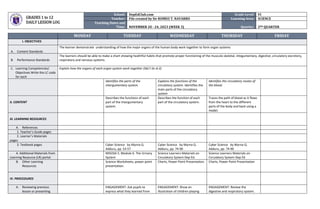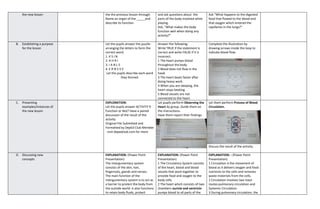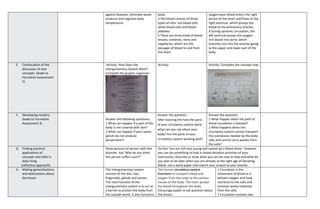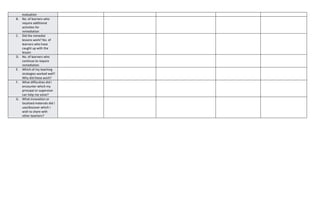This document outlines a daily lesson log for a Grade 6 science class covering organ systems over the course of a week. The lesson objectives are to explain how organs in each system work together and identify the main parts and functions of the integumentary, circulatory, and respiratory systems. Activities include class discussions, worksheets, experiments observing the heart and blood circulation, and developing a chart of health habits that promote organ system functioning. Formative assessments evaluate students' understanding of each system.




